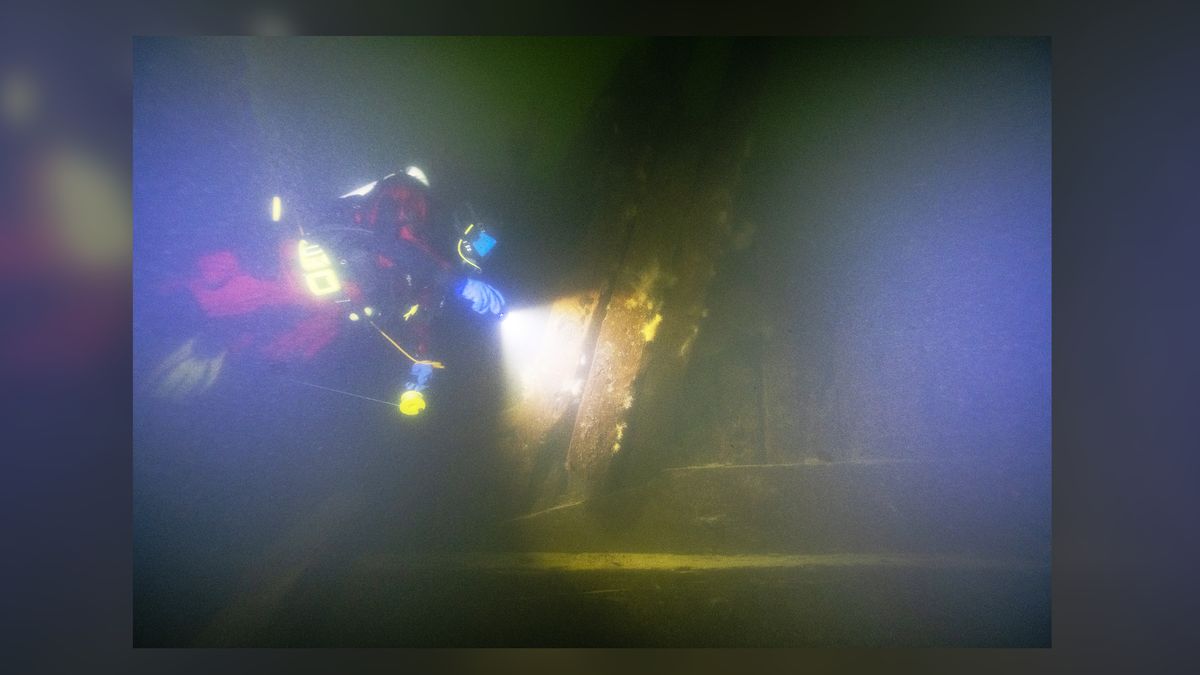The wreckage of a 17th-century Swedish warship called the Äpplet — a sister ship to the famous Vasa, which sank just an hour into its maiden voyage in 1628 — has been found in the tangled waterways leading to Stockholm, where it was deliberately sunk to to protect the city from attacks from the sea in 1659.
The wreck is near Vaxholm Island, but its exact location and depth are kept secret; access to the site is controlled by the Swedish Navy because the wreck is in a military sensitive area near the Swedish capital.
Archaeologists from Sweden Museum of shipwrecks (opens in a new tab) and Navy personnel made the first exploratory dives to the wreck in December 2021 and conducted a more thorough survey in the spring of 2022.
Jim Henson (opens in a new tab), the museum’s marine archaeologist who is leading the project, said recent scientific analysis of several aspects of the wreck leaves no doubt that it is the Äpplet. “It was about a month ago when all the pieces just fell apart,” he told Live Science. “We saw that it couldn’t be any other ship – we were thrilled.”
On the subject: A 15th-century Baltic warship served as a ‘floating castle’ for a fearless king
Opening Äpplet (“Apple”) can help archaeologists it is better to understand what caused the death of the “Vase”, which was saved in 1961 and is now one of the main museum attractions of Scandinavia.
Vasa was named after the Swedish royal house and was one of the most advanced warships of its time. It was 226 feet (69 meters) long and armed with 64 guns on two decks. Most were very heavy guns capable of firing a 24-pound (11-kilogram) ball.
But the ship sank on August 10, 1628, having sailed just 4,265 feet (1,300 m) from its anchorage in Stockholm harbor when it sank in a gust of wind in front of a crowd of people. About 30 crew members died in the crash.
Historical warships
Hanson said the key to identifying the Äpplet was the tree rings visible in the beams of the wreckage, which showed conclusively that the ship was built from the same batch of wood as the Vasa, and the exact measurements of the hull, which showed that the ship was built several feet wider than the Vase, as historical accounts suggest.
Both Vasa and Äpplet were designed by Dutch shipwright Henrik Hibbertson. But he died in 1627, and construction was completed by another Dutch shipbuilder, Henrik Jakobson.
After Jacobson completed Vasa, he suspected it had been made too narrow for its height, so he increased the width of the hull for Äpplet, which was completed a year later and launched in 1629, Hanson said.
On the subject: World’s Deepest Shipwreck Found – US Navy Warship Sunk in World War II’s Largest Naval Battle
Jacobson also built two later warships of almost identical design, the Kronan (“Crown”) and the Scepter, both of which were even wider. Scepter, in particular, was very steady and “a good sailor,” Hanson said. “So it took four ships to make a really good ship,” he said.
The main problem with the Vasa, he said, was that it was too narrow for its height above the water, which allowed it to carry another gun deck, but also made it prone to tilting in high winds, he said.
“The king and the admirals wanted heavy weapons on the ship,” Hanson said. But “if they had the bottom gun holes open, and if they had too much ballast, and if it was windy … then it would be really unstable.”
Deliberate immersion
The wreck of the Äpplet is important in its own right as an early 17th century warship and will shed new light on the Vasa and the reasons for its sinking.
One of the most important features of the newly discovered wreck is that its hull is exposed where the Vasa’s hull is not exposed; this difference will allow archaeologists to study the construction of both ships without violating the legal preservation orders that surrounded Vasa.
“It has huge potential for us for the simple reason that I’m not allowed to dissect Vasa,” he said Fred Hawker (opens in a new tab)director of research at Vasa Museum (opens in a new tab). “But the hull structure consists of four or five layers of wood with a thickness that I can’t see or reach.”
The wreckage of two later ships in the same series, the Cronan and the Sceptre, has yet to be found, “but we’re on the trail,” Hawker said.
Like the Äpplet, they were deliberately sunk in the mid-17th century to protect against sea approaches to Stockholm by snagging the hulls of enemy ships, he said.
Hanson added that Sweden was at war with the Netherlands, Denmark and Poland at the time, and the decision to deliberately sink the ships meant they still had a defensive role.
“Their second story is that they defended Sweden at sea, and then ended up on the seabed, where they were still defending themselves,” he said.
This article is first published on Source link
